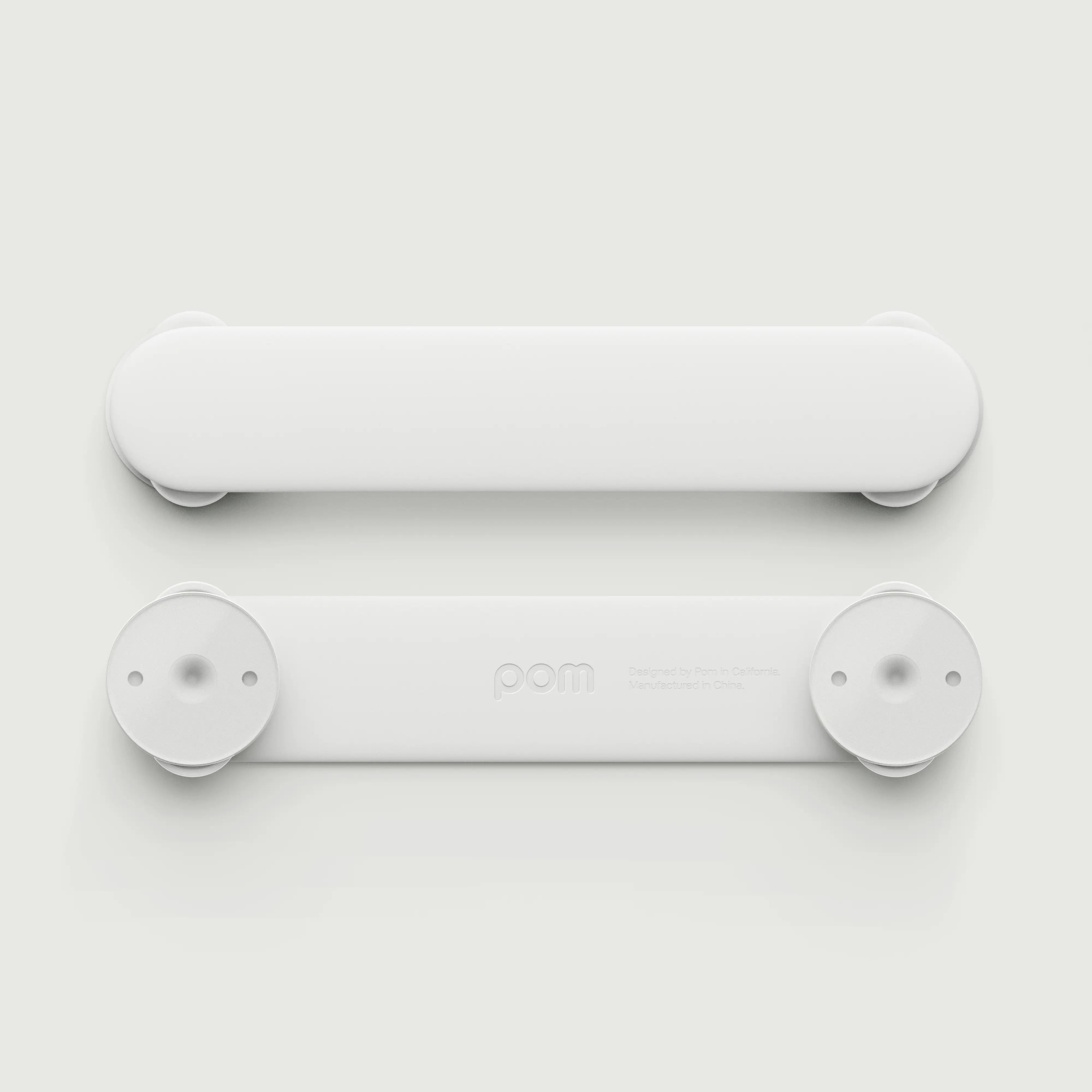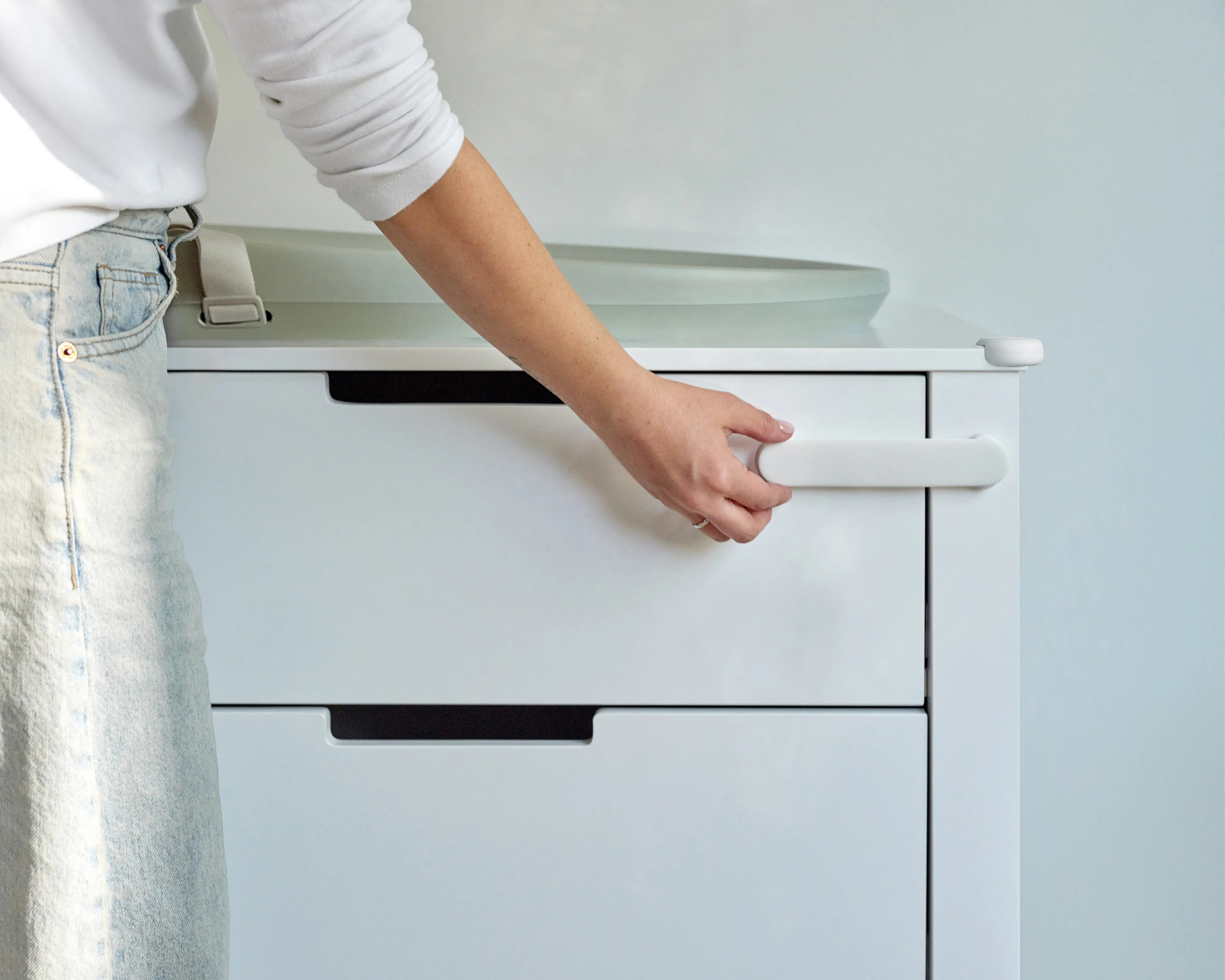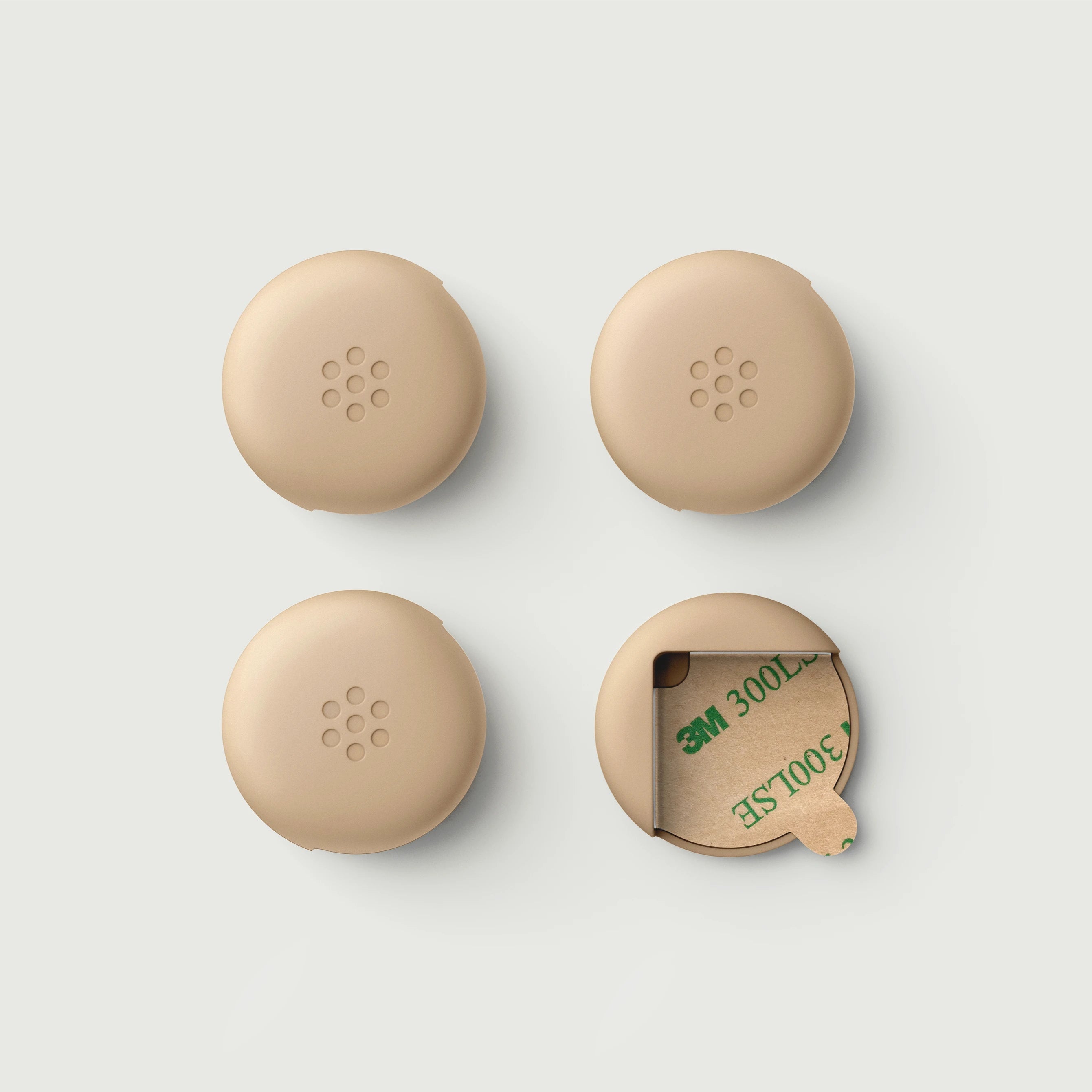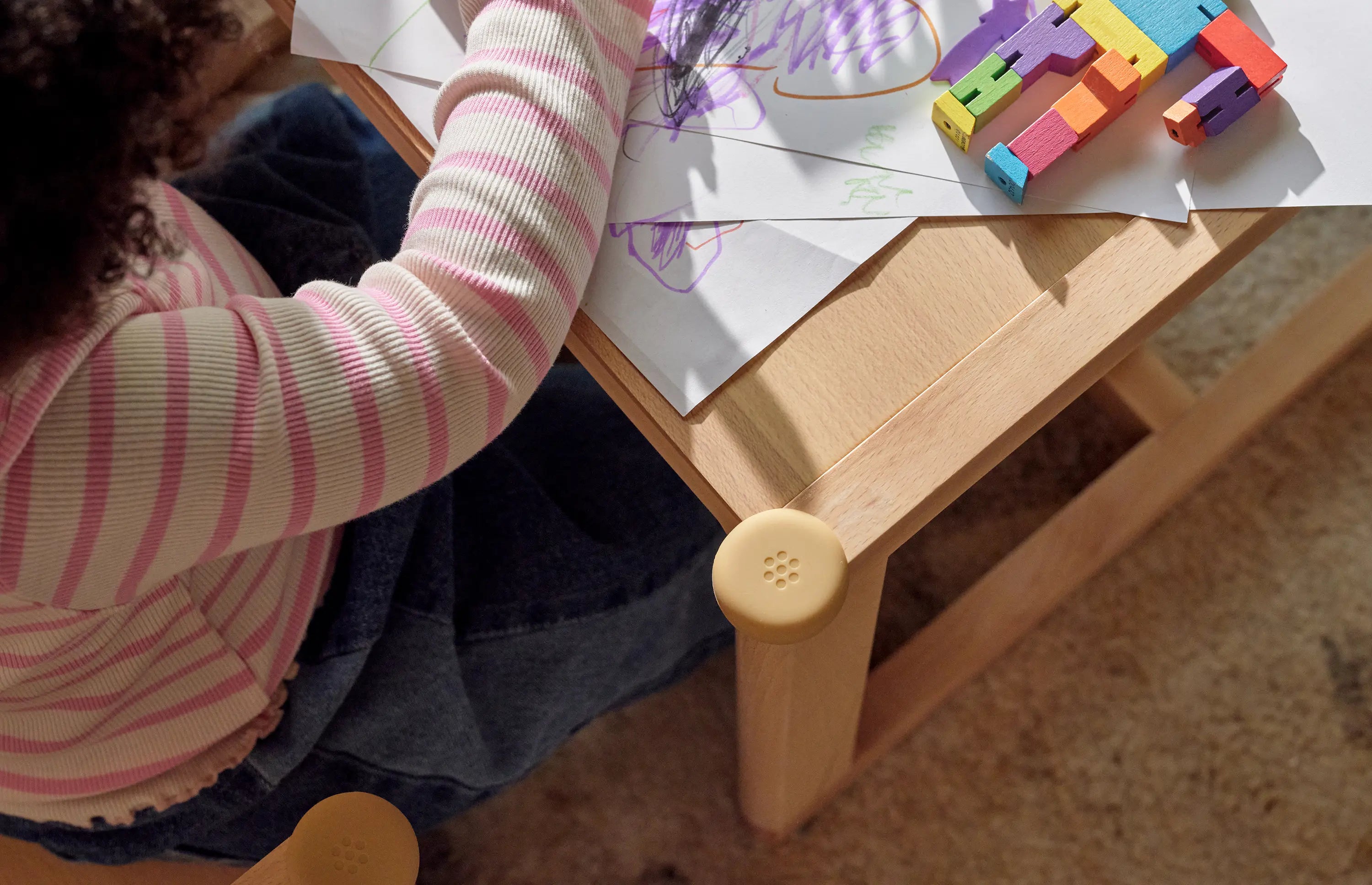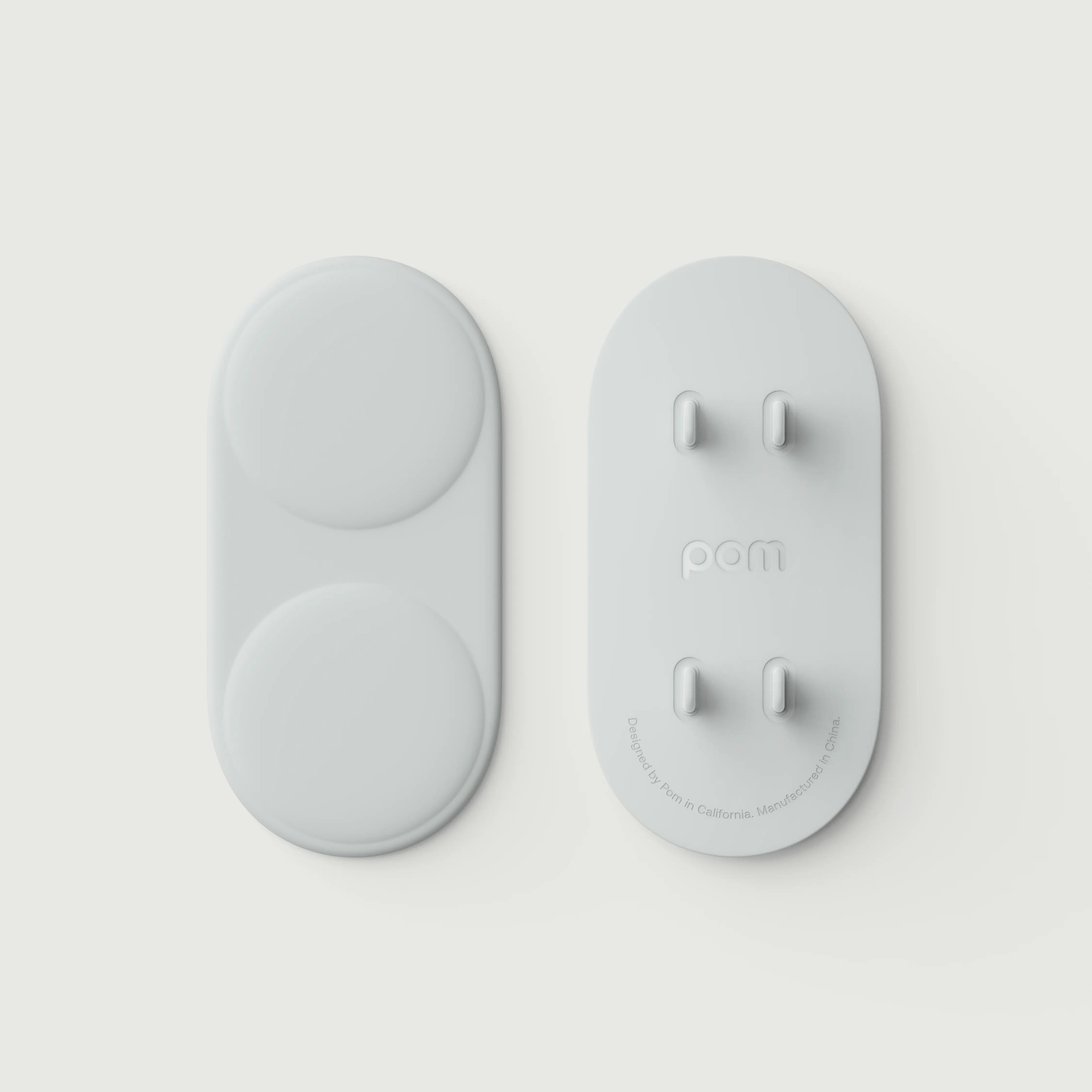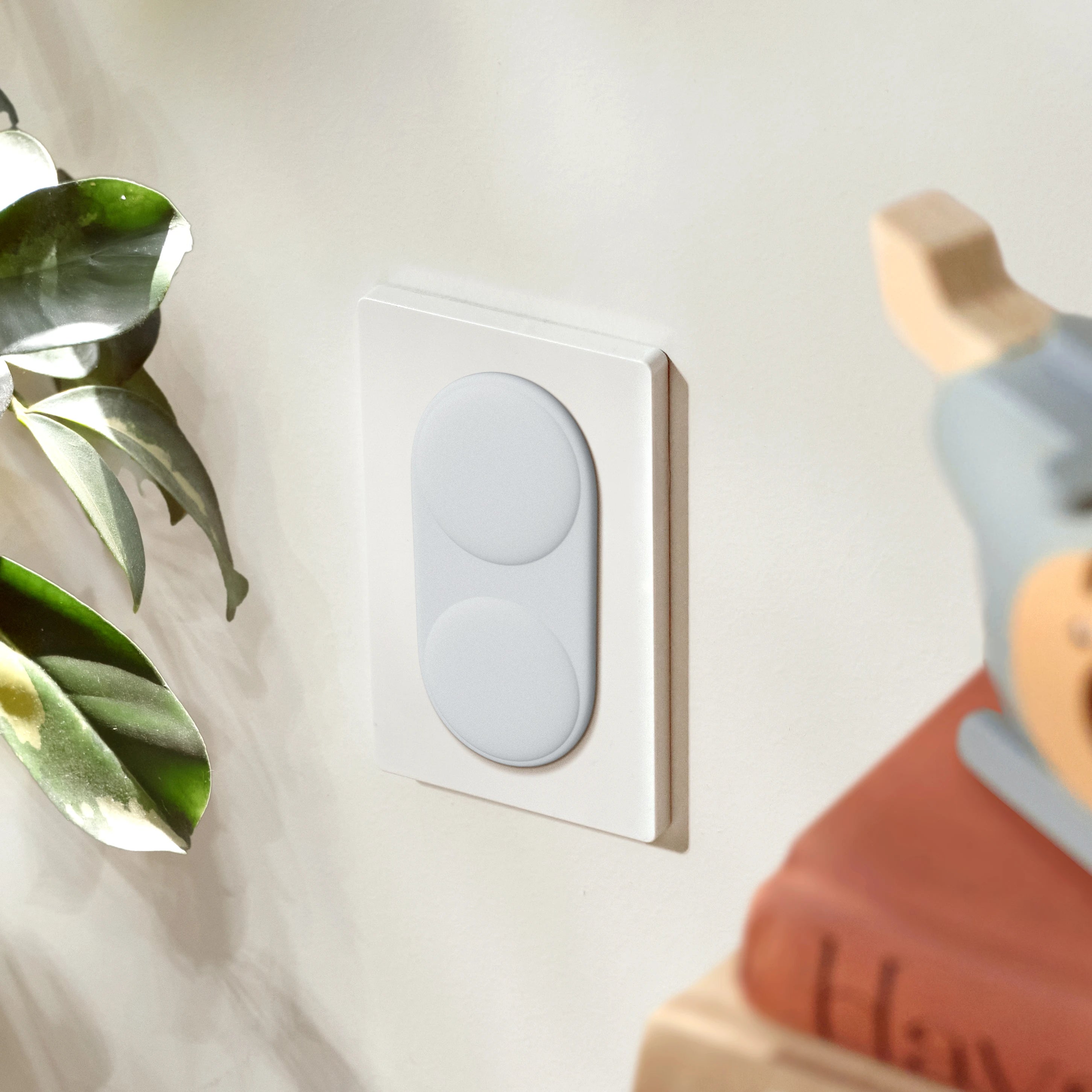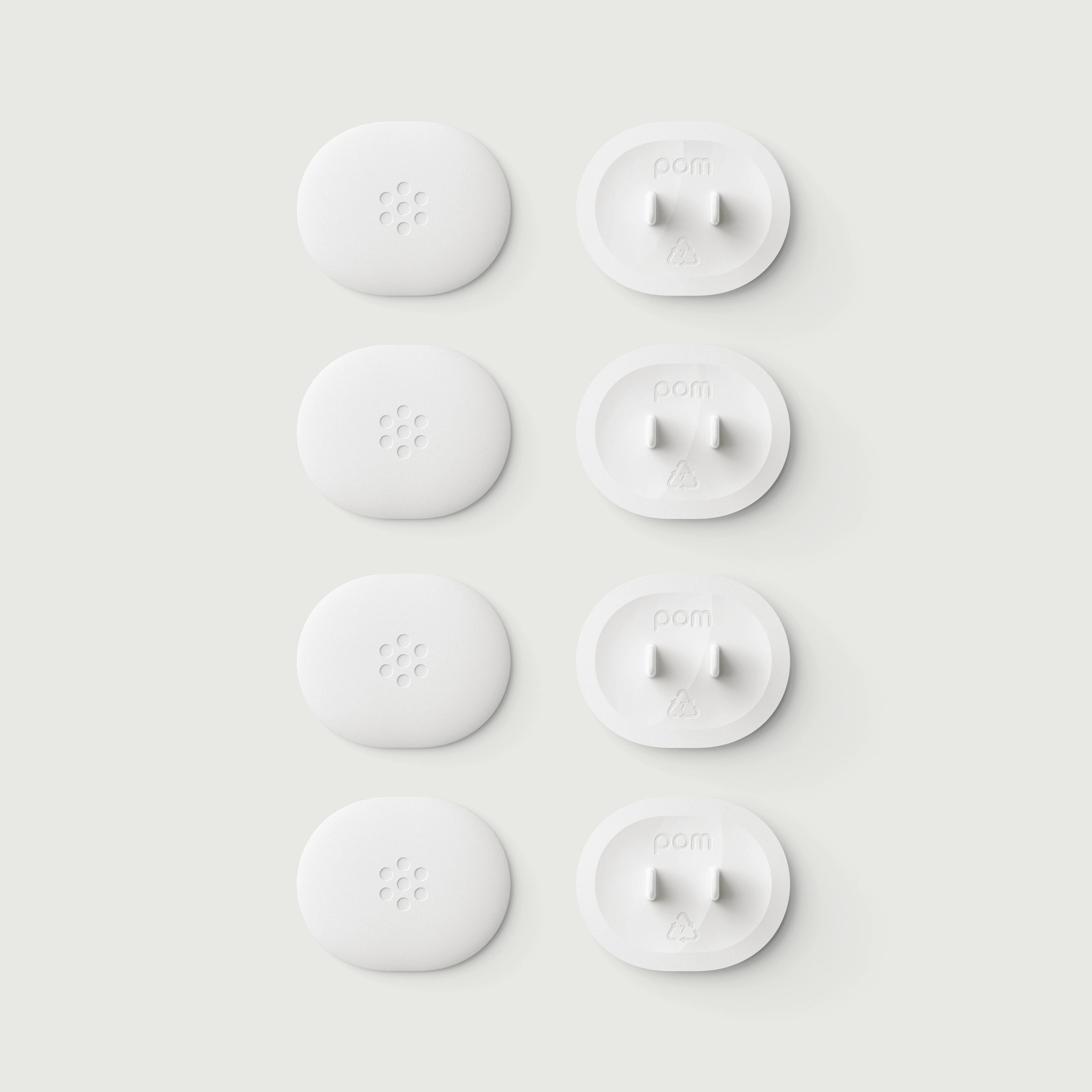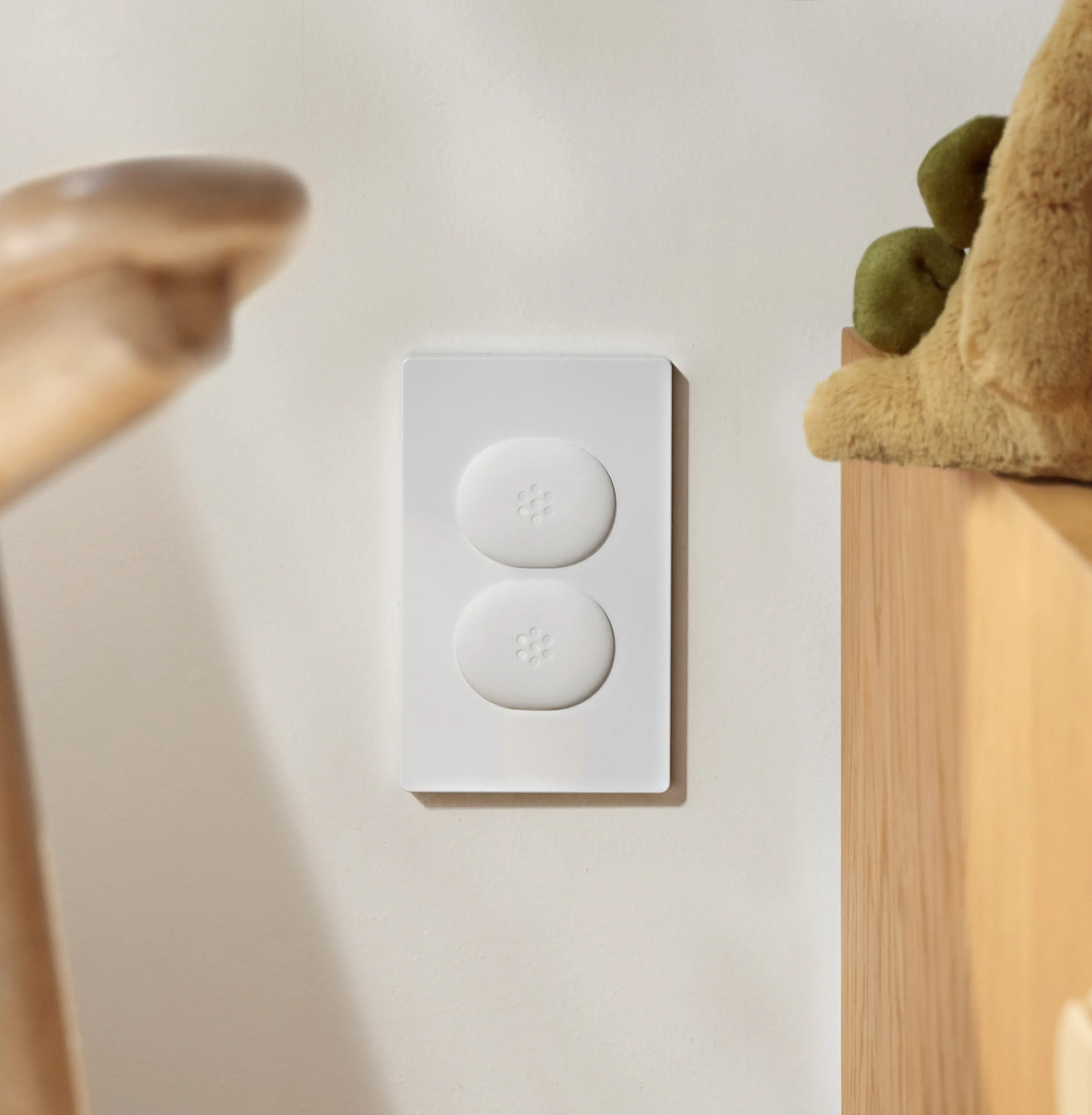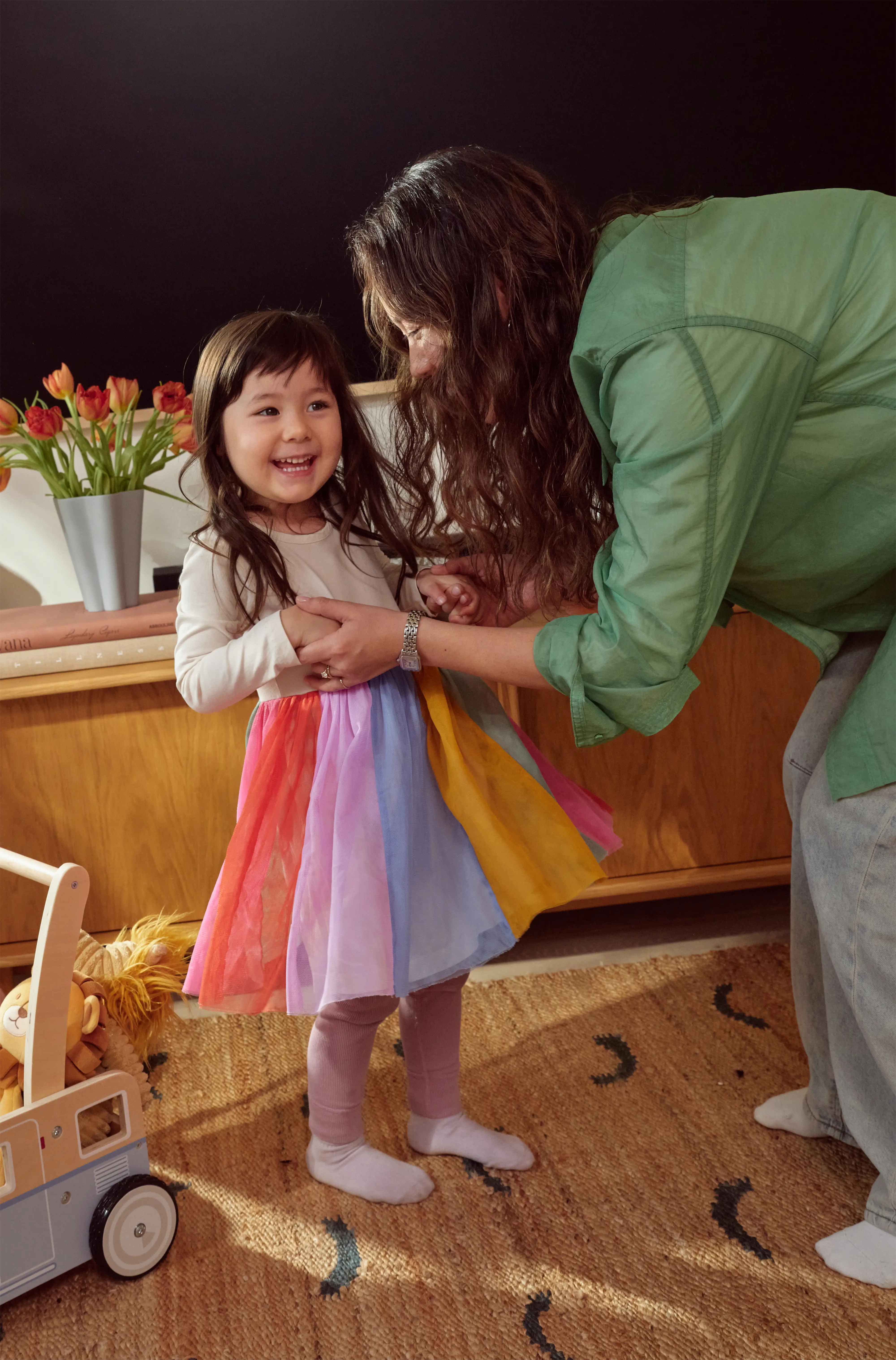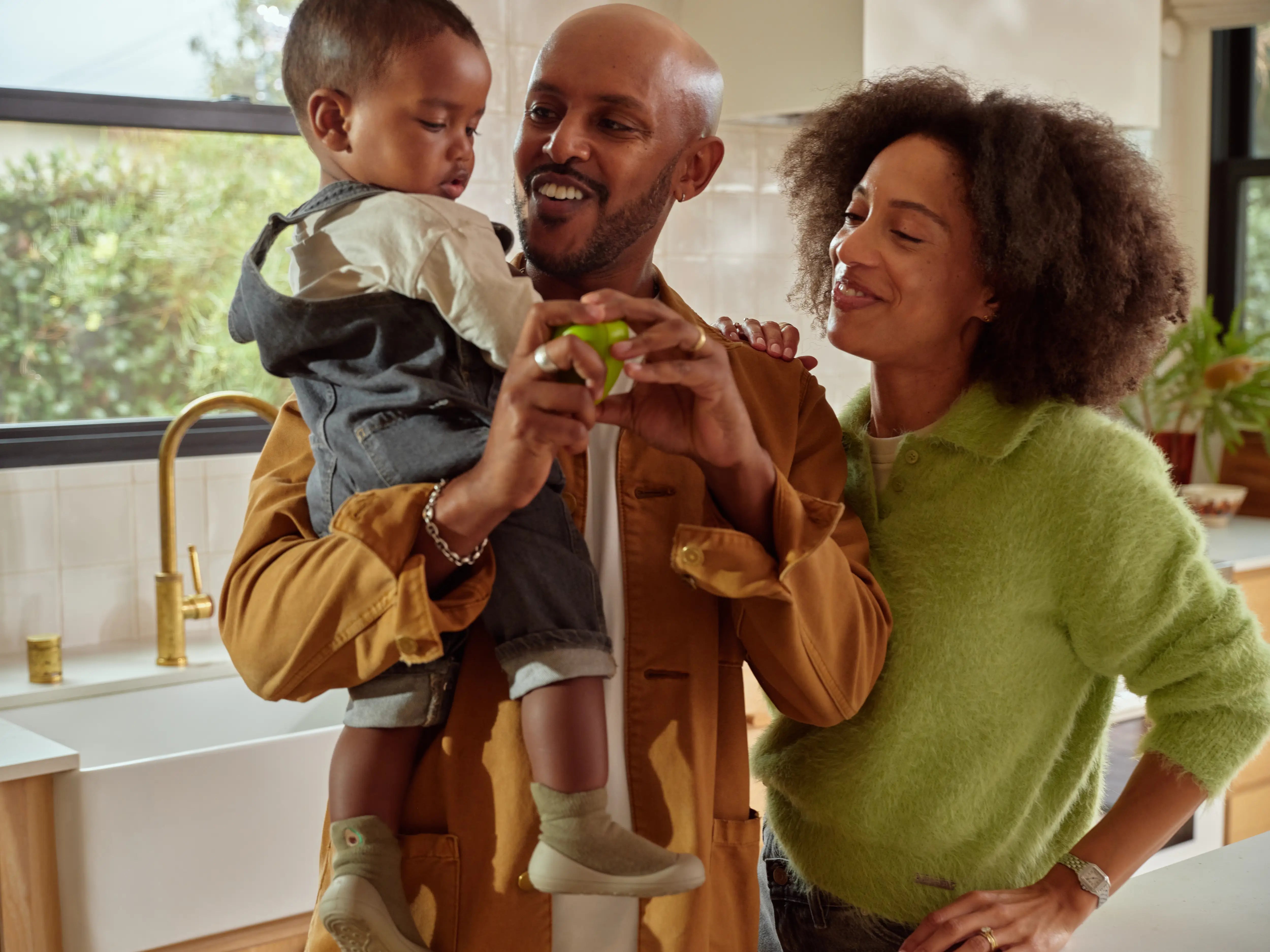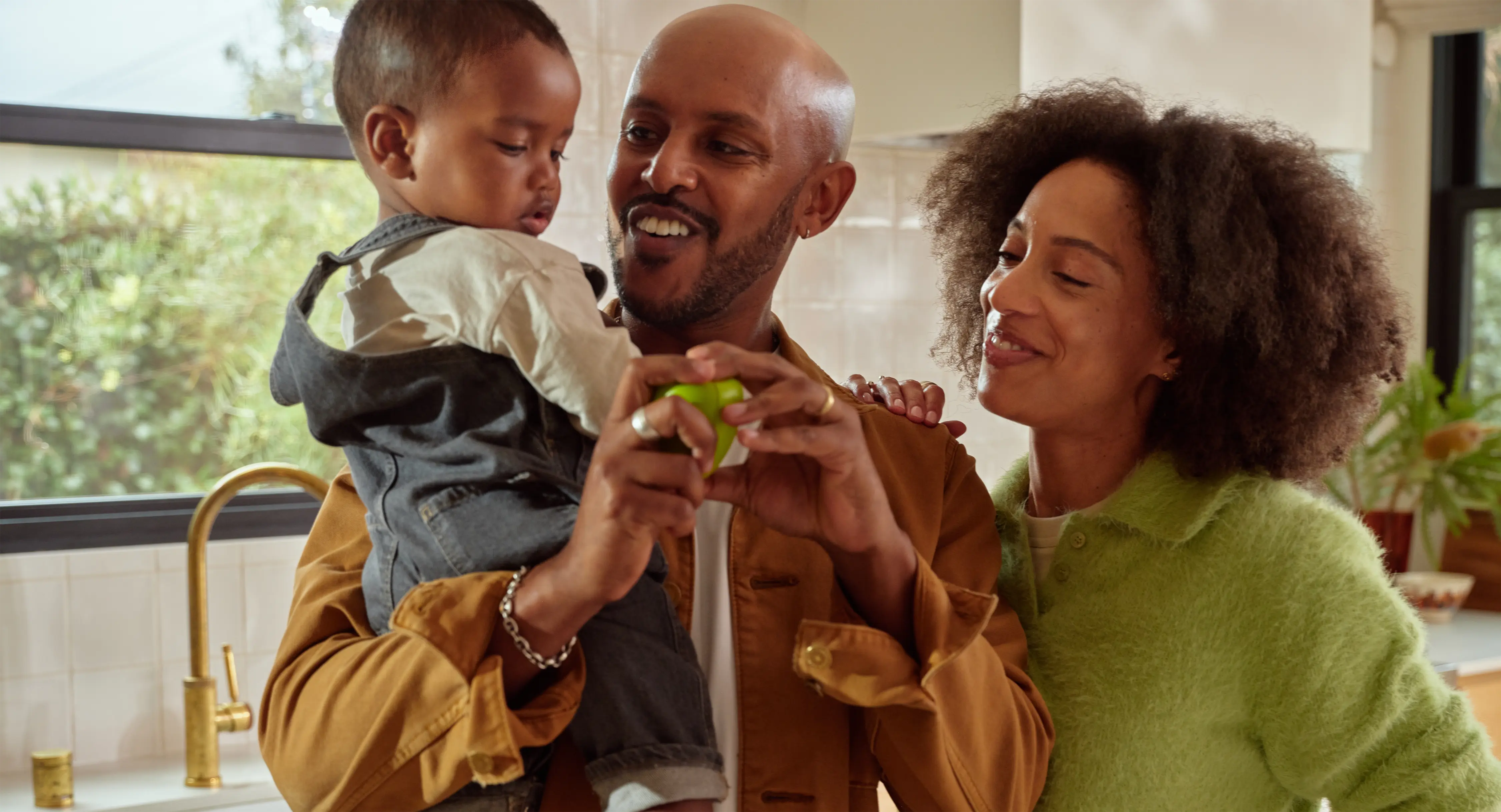
Babyproofing By Age
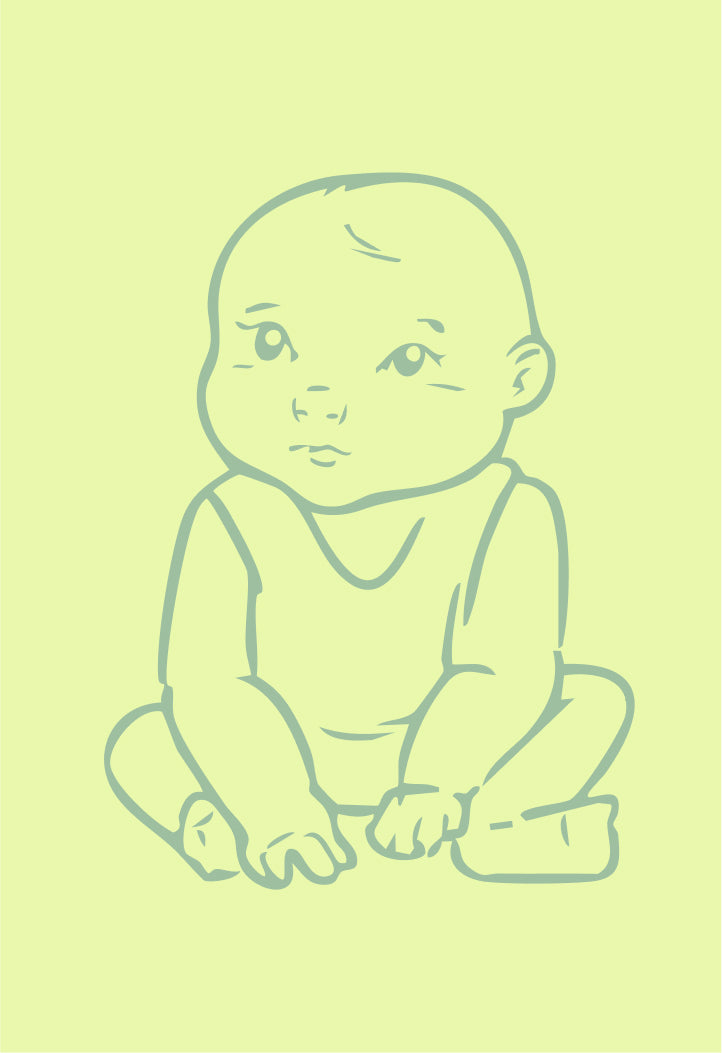
The Early Days
Before your baby starts crawling or walking, the early months are still full of discovery, and some risk. As a newborn, your child will begin rolling, grasping, and exploring their environment with surprising speed.
Babyproofing at this stage focuses on creating a secure, clutter-free home with special attention to safe sleep spaces, fall prevention, and minimizing risks like suffocation and choking.
It's important to start early–it's easier to adjust your home now than when your little one becomes mobile.¹
Recommended Babyproofing
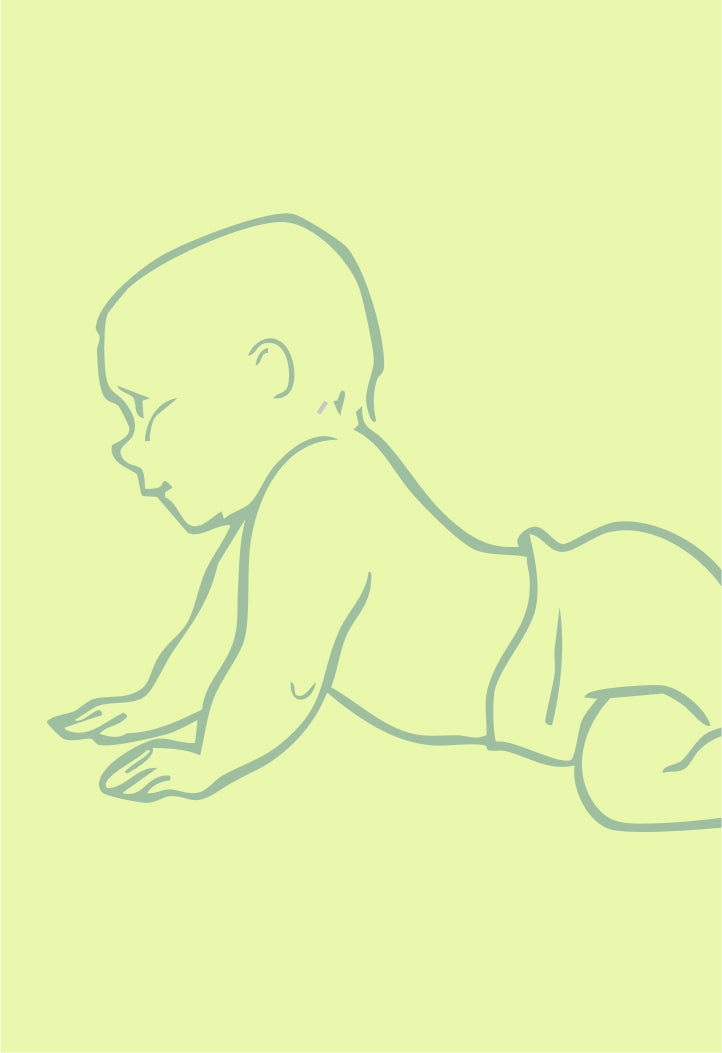
The Crawling Stage
Your baby's world is getting bigger, and they're getting faster.
At this stage, many babies begin rolling, scooting, and crawling, putting their hands (and mouths) on everything within reach. This stage marks the shift from stationary to mobile. It's important to keep up with their curiosity and prepare the paths they're about to explore.
Baby proofing now shifts from just creating safe zones to actively blocking access to danger. It's time to think like a crawler–anything at floor level or just above is fair game.¹
Recommended Babyproofing
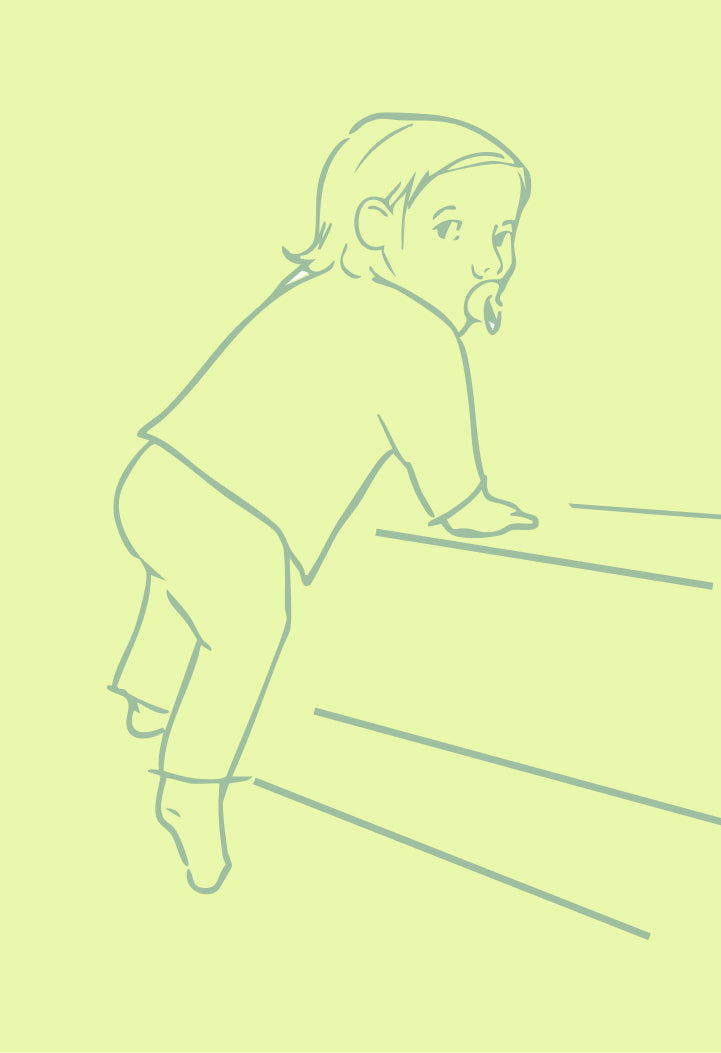
Cruisers and Climbers
This is the phase where your baby goes vertical–pulling up, cruising along furniture, and maybe even taking those first wobbly steps.
As their confidence and reach grow, so do the risks. Suddenly, what was once out of sight is now within tiny arms' length. Mobility expands and transforms your baby's environment.
Now is the time to secure furniture if you haven't already, cover sharp corners up higher and down low, and double down on gates and locks in other areas of your home.¹
Recommended Babyproofing
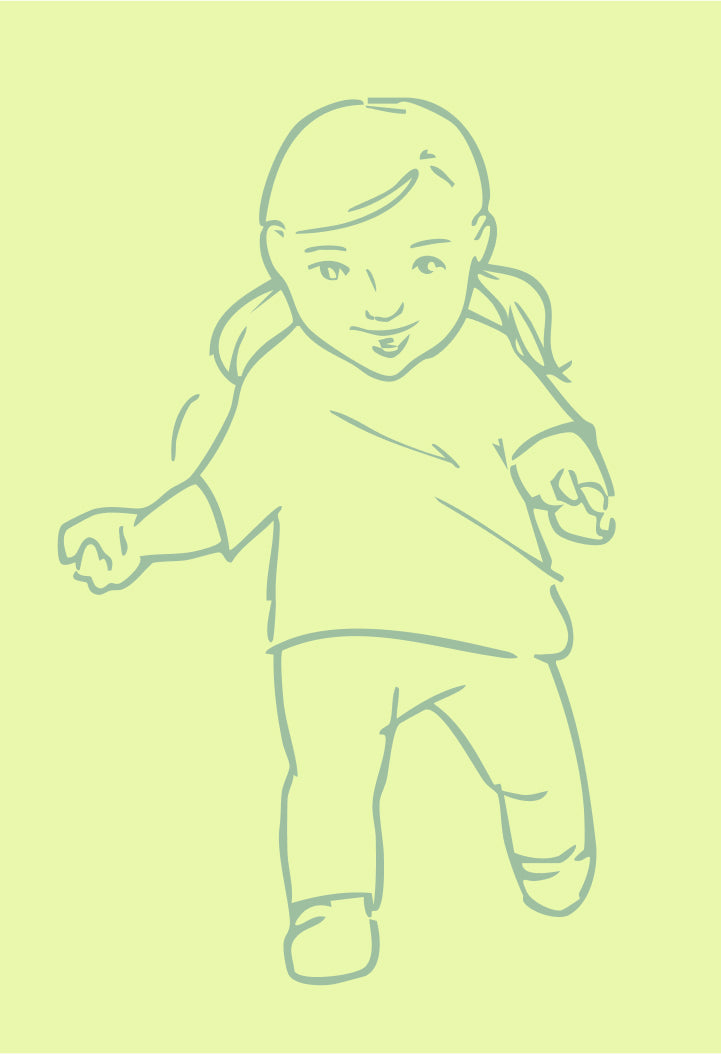
Full Speed Ahead
Your baby is now a toddler–and their world is a racetrack. Walking turns into running, grabbing into climbing, and every object is an opportunity.
At this stage, babyproofing becomes more about managing momentum and access. Secure what can fall, block what shouldn't open, and limit entry to rooms and areas where supervision is important.¹
Recommended Babyproofing
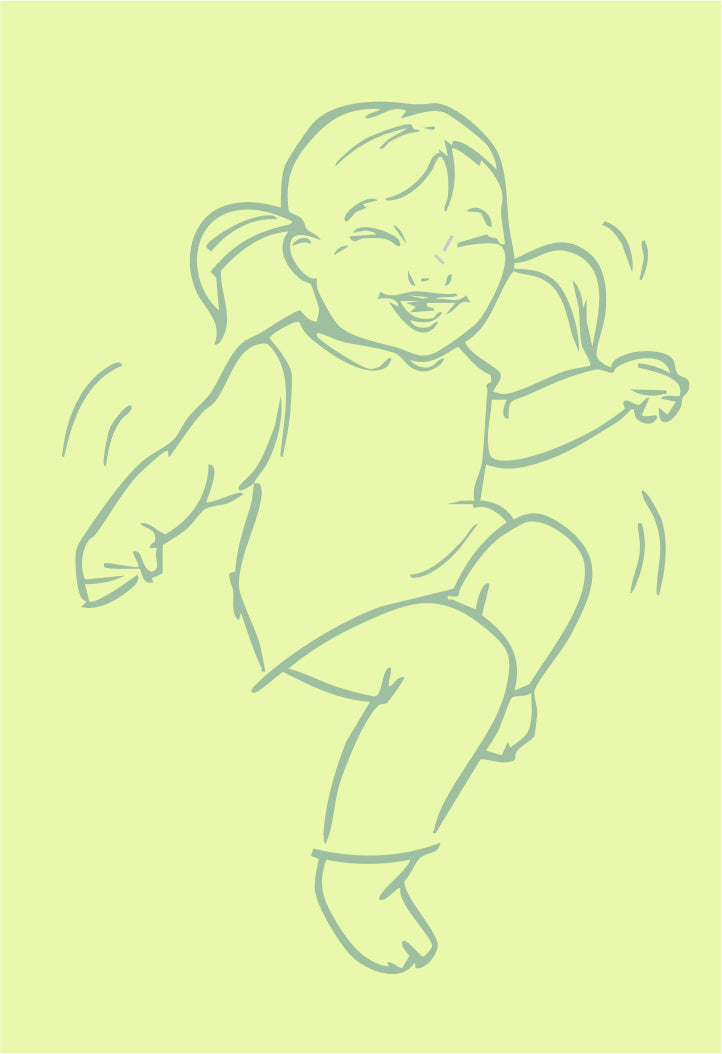
Bold and Busy
Two year olds are fast, fearless, and fiercely independent. They're climbing higher, opening more, and testing every limit–physically, mentally, and emotionally.
Babyproofing at this age is all about containment, prevention, and smart redirection. How can you steer them safely toward discovery without constant intervention?
This stage is less about removing every hazard and more about reshaping the environment to meet their developmental drive–with boundaries that hold.¹
Recommended Babyproofing
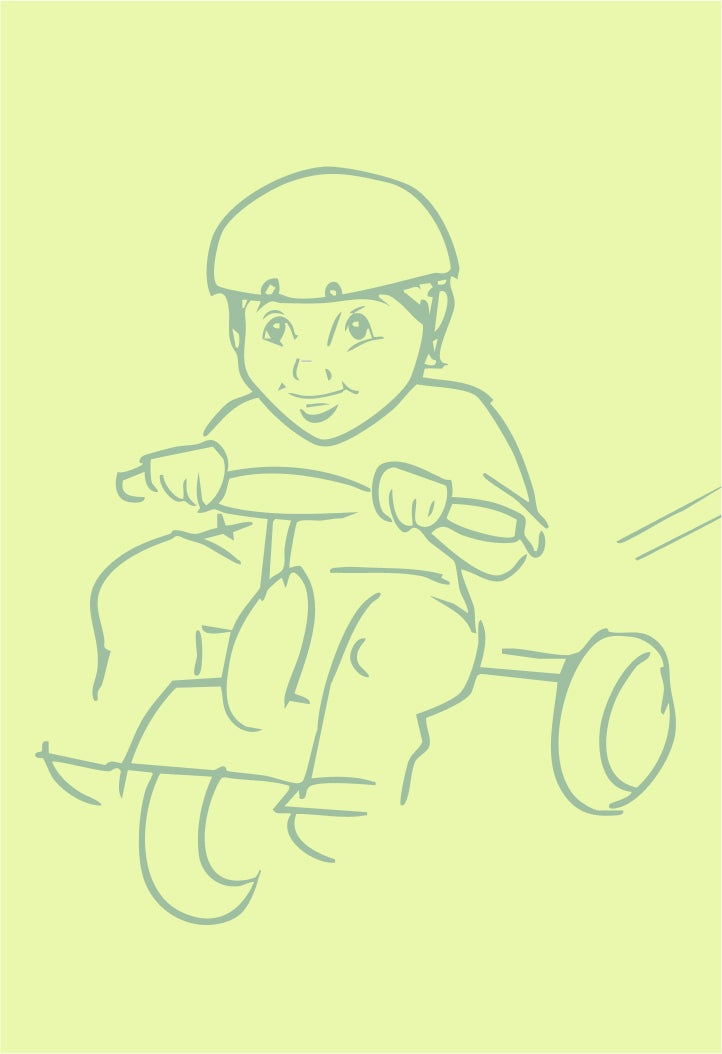
Preschoolers
Three year olds are explorers with opinions–and more coordination than ever. They climb faster, open almost anything, and have the language to ask "why?" or insist "I can do it!"
At this stage, babyproofing becomes about managing independence: teaching boundaries, reinforcing safety habits, and modifying your space so your child can explore more freely without compromising their safety.¹
Recommended Babyproofing
Babyproofing By Room
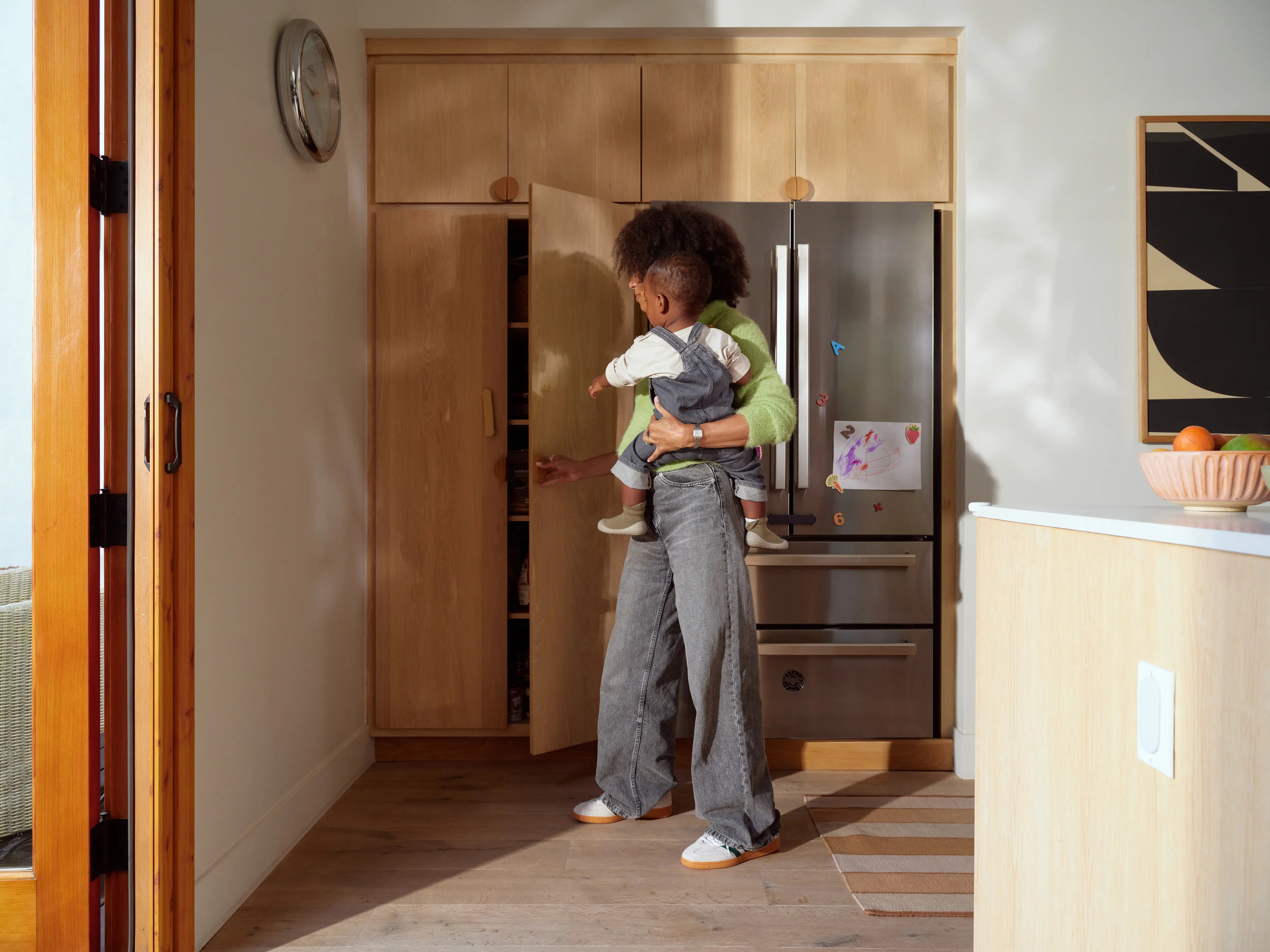
Kitchen
The kitchen is where many of us spend most of our time. It's a space for cooking, cleaning, and gathering with family and friends. For little ones, the kitchen is captivating, filled with new sights, sounds, and textures that invite exploration.
With so many appliances, cabinets, and everyday tools within reach, the kitchen deserves extra attention when babyproofing. A few thoughtful adjustments will help keep it safe without disrupting the way you use the space.¹
Recommended Babyproofing
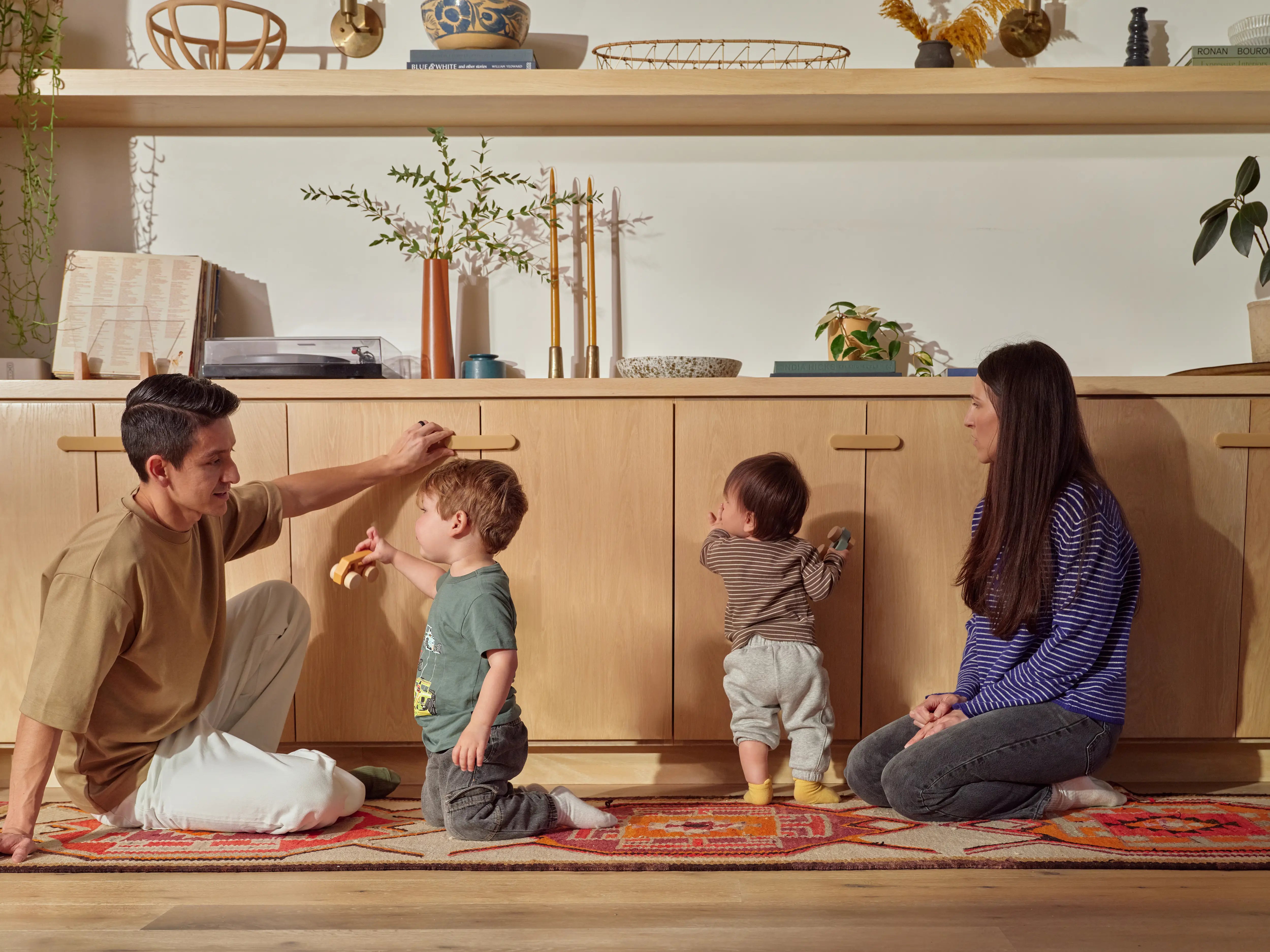
Living Room
The living room is often the hub of family life. It's where we relax, gather, and play, which makes it one of the spaces your baby will spend the most time in. From sharp-edged furniture to reachable electronics, there are a number of things to address. With a few simple adjustments, you can create a safe environment that still feels warm and inviting.¹
Recommended Babyproofing
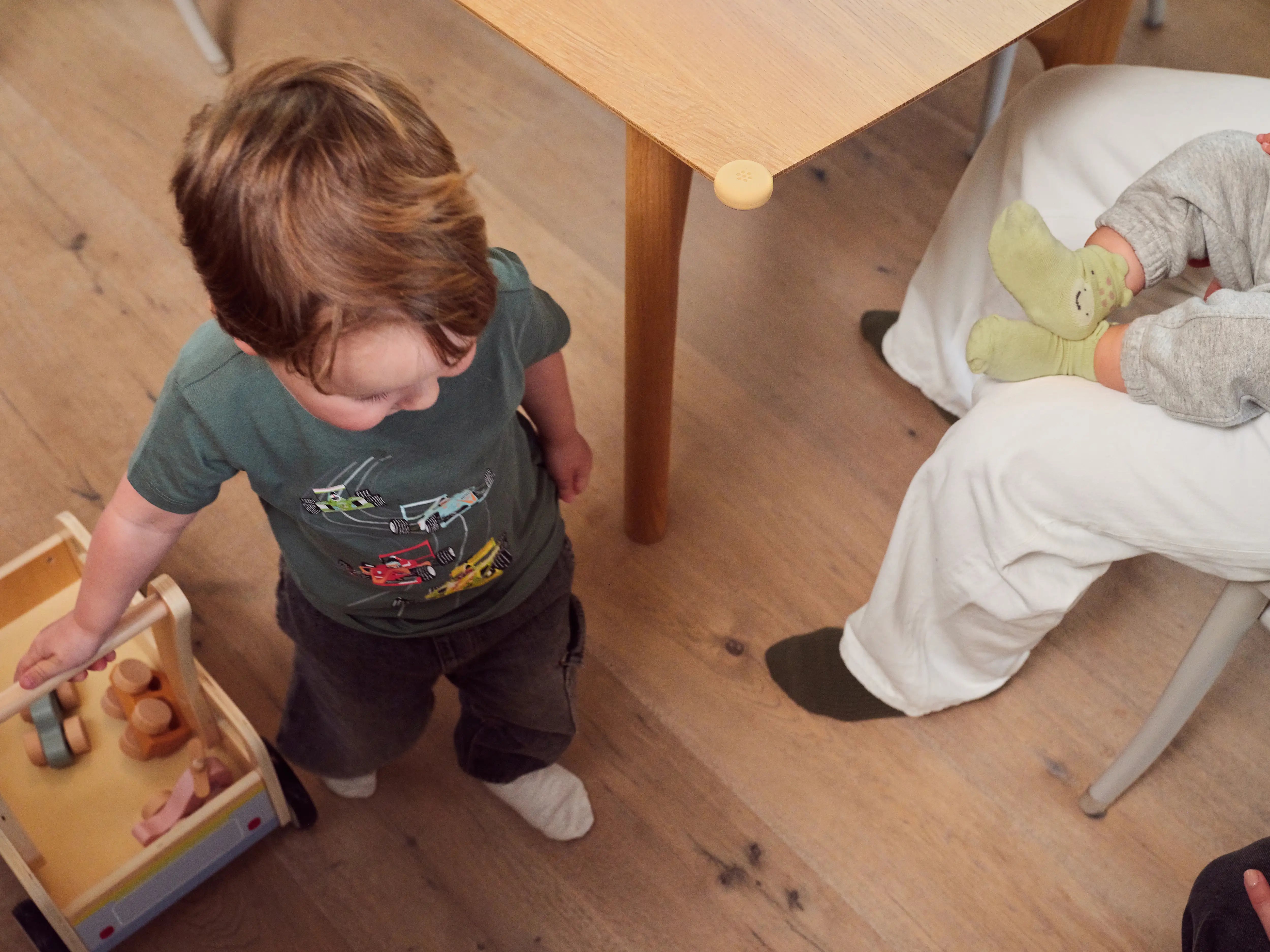
Dining Room
The dining room is a space full of tall furniture, sharp edges, and surfaces that naturally attract a curious little one's attention. From climbing on chairs to pulling on tablecloths, it's an area where small accidents can happen quickly.¹
Recommended Babyproofing
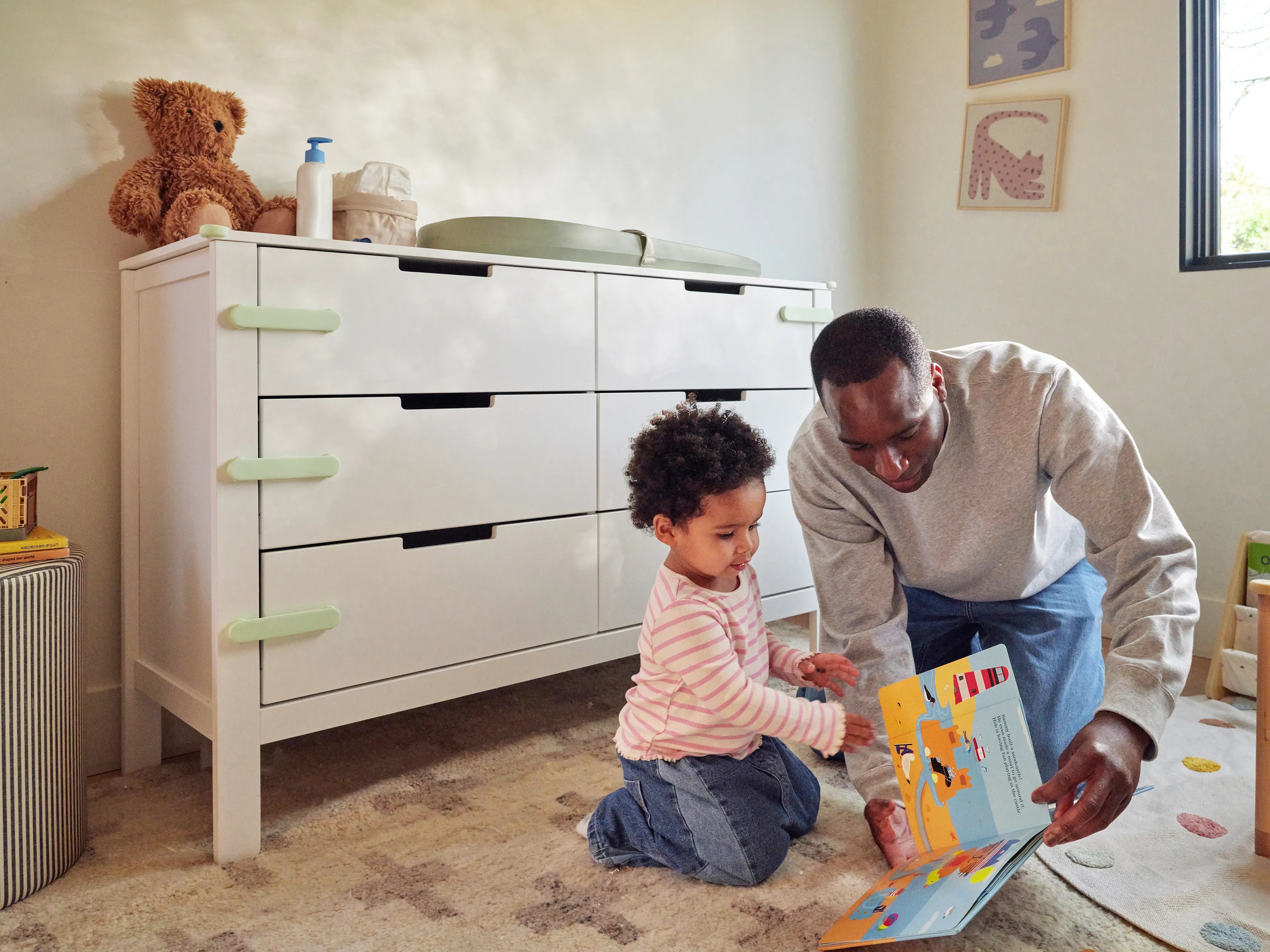
Nursery
Your babies nursery is designed to be a calm, comforting space, but even here there are some hidden risks worth addressing. Furniture, cords, and the placement of the crib can all affect your child's safety. With some thoughtful setup, the nursery can be both cozy and safe.¹
Recommended Babyproofing
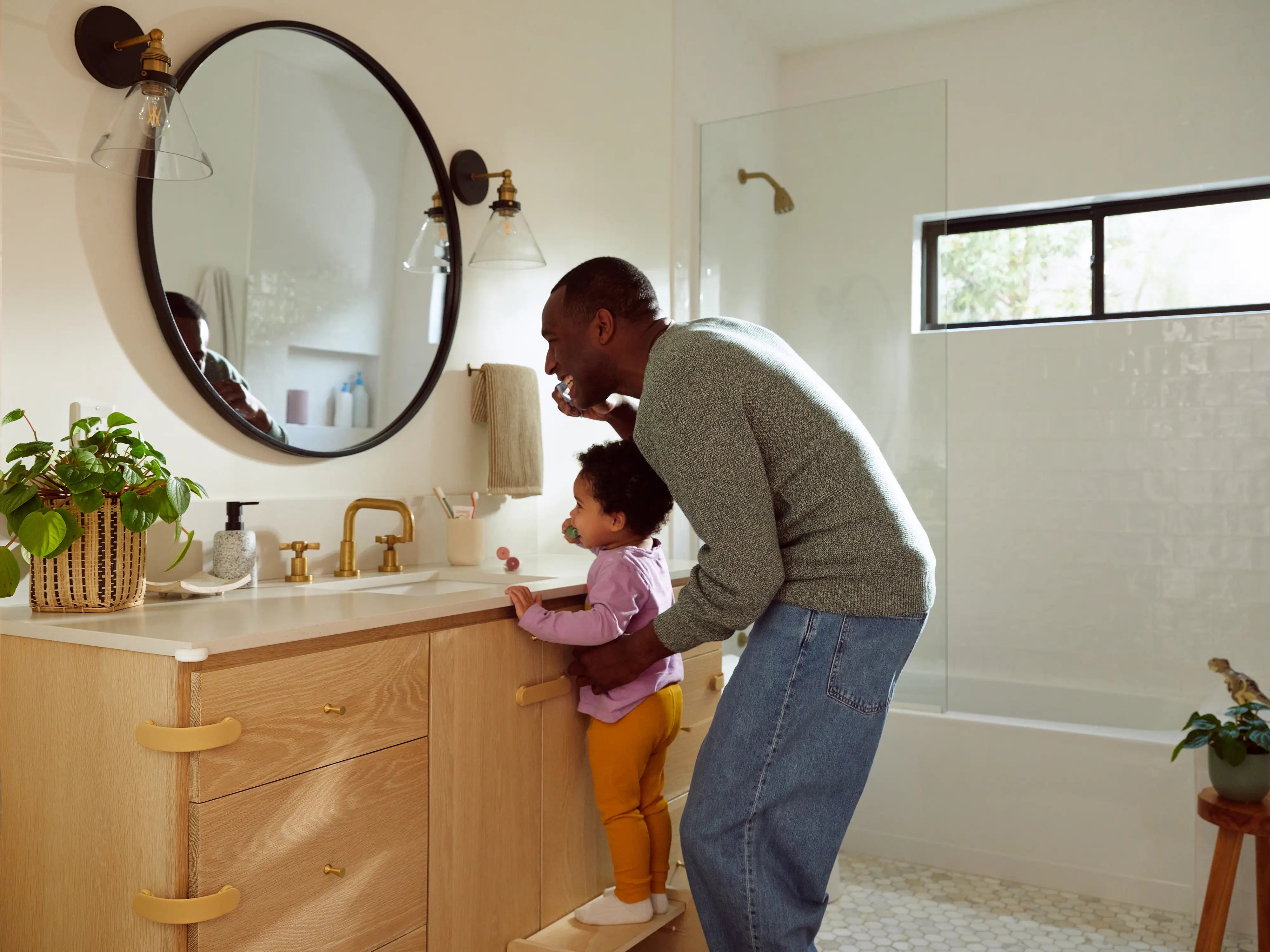
Bathroom
The bathroom will be a big part of your child's daily routing, from baths in the early years to potty training and brushing teeth as they grow. It's also one of the most high-risk rooms in the home, with water, slippery surfaces, and everyday products that need to be kept out of reach. By planning ahead, you can make the bathroom safe while still keeping it functional for the whole family.¹
Recommended Babyproofing
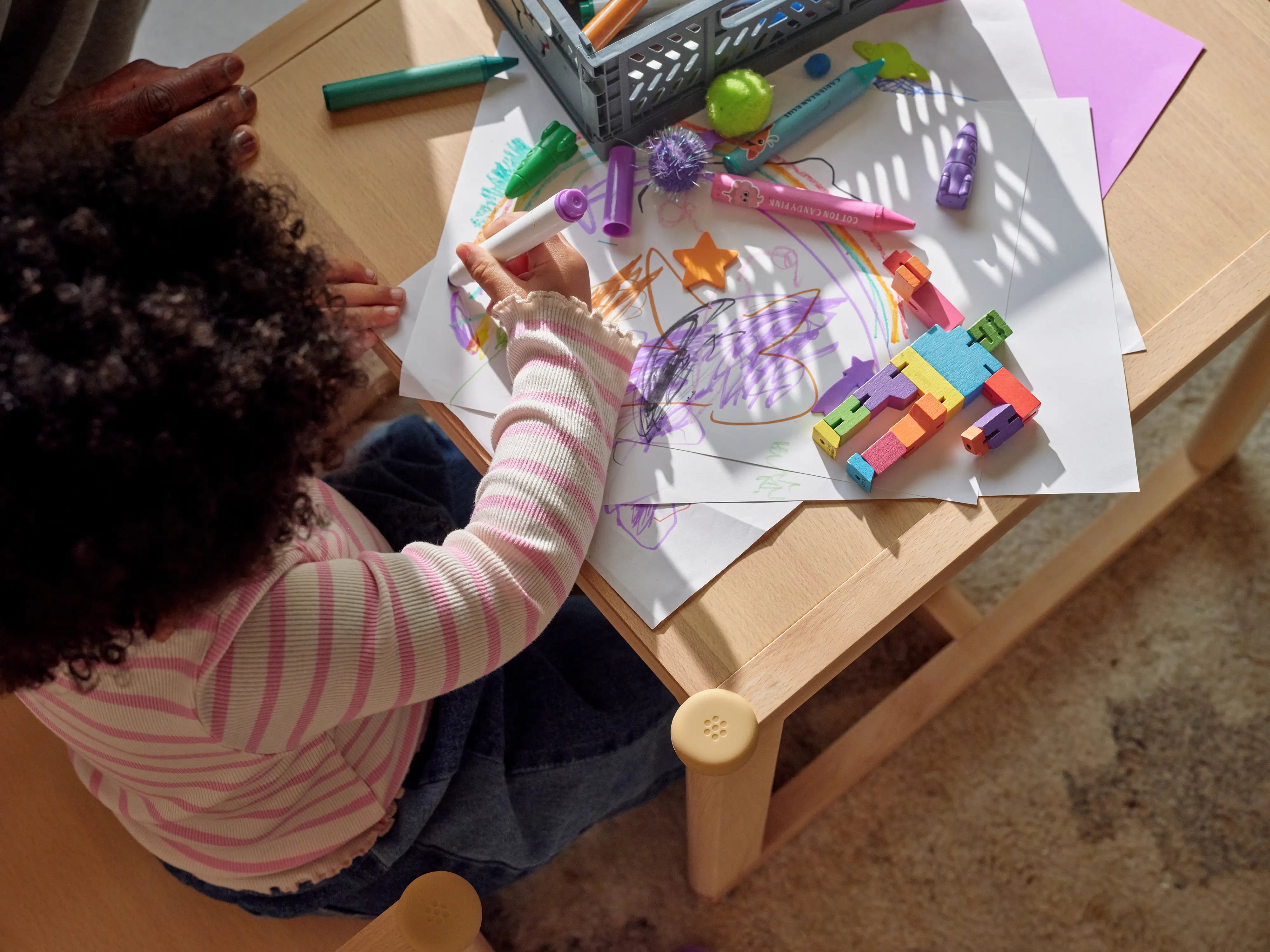
Toddler Room
As your child grows into a toddler, their room becomes more than a place to sleep. It's where they play, read, explore, and begin learning independence. With newfound mobility, the toddler room brings new safety considerations compared to a nursery. Setting up the space thoughtfully will help keep it safe while supporting your child's growth.¹
Recommended Babyproofing
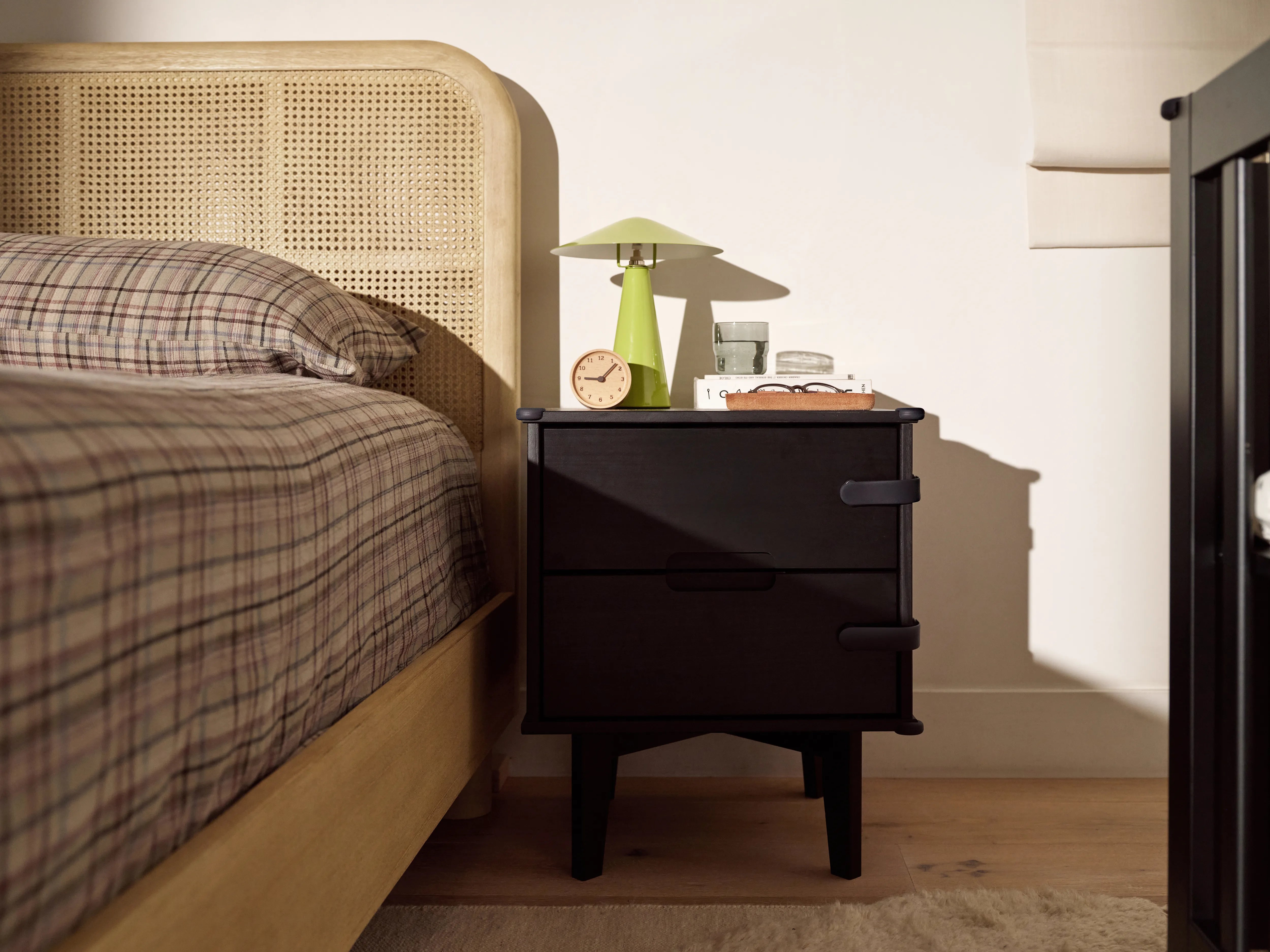
Your Bedroom
Your bedroom may feel like a safe space, but little ones spend a lot of time here in the early years, especially during nighttime feedings or mornings in bed. From heavy furniture to small objects left on nightstands, the room has its own set of risks worth addressing. Creating a safe environment will give you peace of mind during those everyday moments together.¹
Recommended Babyproofing
All baby proofing involves risk.
Read all instructions and warnings on the product packaging before first use.
Baby proofing is not a replacement for adult supervision. Our products are intended to be deterrents, and make it difficult for children to gain access to something like a cabinet, or an outlet, but an unsupervised child may still be able to defeat our products.
Our products are for indoor home use only. They are not toys. Do not allow children to play with them. When possible, install out of reach of children.
Adult installation of all our products is required. Keep small parts away from children. Our products are intended to deter access by very young children to the contents of a cabinet, drawer, or power outlet, but some children may still be able to defeat them. Replace any of our products if they become damaged or broken or fail to function properly.
Products that use adhesive, may remove some of the finish from some furniture surfaces. Test any adhesive on a discreet or hidden area before adhering. Always allow adhesive to set for several hours before use, so that it reaches its full strength.
If using a product designed to cover an outlet, always check for secure installation. Ensure your wall outlet and face plate are installed correctly and are flushed with each other. If the wall outlet and faceplate are not flush, gaps may form between the face plate and the plug protector, making it easier for a child to defeat the device. If the closure falls out or fits loosely in the receptacle, the receptacle contacts may be worn or broken. Keep children away from electrical equipment. To reduce risk of injury caused by fire or shock, do not use receptacles that are broken or do not meet local safety codes. Precautions should be observed during handling and use to prevent electric shock.
If using a strap lock or cabinet lock, never install on stoves, ovens, doors, or as a window lock. Never rely on a strap lock to restrict access to knives, sharp objects, medicine, medication, or anything that would otherwise be considered dangerous to an unsupervised child. When possible, install strap locks out of reach of children.
¹The tips and recommendations in this guide are meant to provide high-level recommendations for common developmental milestones and household spaces. Every home and child is unique, and you may find that additional babyproofing steps are needed beyond what is listed here. Babyproofing products and strategies are designed to serve as deterrents, not guarantees. They are never a replacement for adult supervision.
